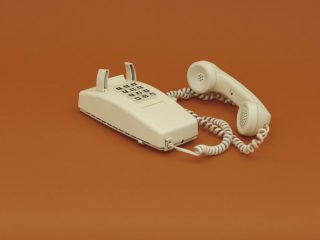While Chalkboard Mag is typically our go-to for all things green, good and glowing, this article hits on a rarely talked about topic that we think is incredibly important. Here’s to a well-rounded quest for health and wellness!
WE LOVE THIS fascinating perspective on negative emotions from the authors and psychologists behind Psychological Nutrition. In their new book, Dr. Shoba Sreenivasan and Dr. Linda Weinberger use the same language we use to describe our diets – like junk food and “empty calories” – to describe the way we should be managing our emotions and refer to our relationships as either “nutritious” or “malnourishing” – interesting, right?
These doctors know just how many of us have kept a food journal to become more aware of the kinds of calories we’re consuming daily. Their goal is to help us apply that same way of thinking to how we’re managing our psychological and emotional “intake” daily too.
Is it possible that keeping an emotional journal can help us break bad habits? It’s certainly worked for many of us when it comes to food and better managing our diets, so we’re willing to give it a shot. Here are the authors with a unique look at how to better manage “high fat” emotions like anger and resentment and “nutrient dense” emotions like joy!
We know junk food when we see it: It’s often high in calories and low in nutrition. If we consume a diet of junk food, we’re likely to end up feeling lethargic, being overweight, having low energy and possibly experiencing medical issues such as diabetes and heart disease.
But what about our emotional “diets”? There are junk emotions, just like junk food. Junk emotions don’t bring out our best – we need to get rid of them.
As clinical psychologists, we wondered what would happen if we began thinking about our emotions just like we were thinking about the ingredients that we feed ourselves. We developed the concept of psychological nutrition – not about food at all, but about how to assess and monitor the emotions that we consume.

In order to get rid of junk emotions, we have to be mindful of the emotions we are consuming; we have to deliberately restrict our diet of high-fat negative emotions (for example, fear, anger, worry, sadness, envy) and increase our consumption of low-fat positive emotions (for example, joy, calmness, optimism). Just like replacing potato chips with braised rainbow carrots, we have to begin a habit of “eating” psychologically nourishing emotions.
Just as with junk food, a diet of junk emotions (like anger, envy, anxiety) leads to psychological malnourishment. How many junk emotions are you consuming in a day?
Like a food diary, each day for a period of seven days, record your emotional reactions, their values (positive or negative) and what triggered them. This will give you a clear picture of your emotional nutritional diet and whether you are psychologically nourished or malnourished. That is, how many “high-fat” or “low-fat” emotions do you experience in a day?
1. Read Your Relationship Labels
Relationships are products made up of feelings. Some are nutritious, others are not. Think of how you examine the packaging of a food product for its nutritional content. How many calories? Is it high fat or low fat? Some products may look good, but it turns out they’re not good for you. Relationships are exactly the same: Some are good for you, others are not.

2. Nutritional Labels for Your Day
Just as food products have labels that describe their nutritional content, there should be “psychological nutritional labels” for relationships and situations. In this way, you would know (or at least have a good idea) whether a relationship or event has a “high-fat” or “low-fat” content before you enter it.
The seven-day journal experience can help you construct psychological nutritional labels. Do you see a pattern about the people or situations you encounter that result in high-fat or low-fat emotions? If so, you should assign labels to them and be sure to balance the low and high calories for a better day!
3. Feed Yourself Well
Remember the value of starting each day making life as fulfilled and joyful as it can be! Make an effort to fill up on emotionally nutritious relationships and circumstances just as you would on nutritious calories!
For more wellness-motivating articles, check out this clever way to use tumeric, how to spot hidden formaldehyde, and these inventive ways to snack on fruit!
Images via Becca Tapert











6 comments
What an interesting notion that a healthy emotional life can be nourishment for the body! I never viewed it in that way; makes total sense. The comparison between junk food and junk emotions is spot on, so why qualify it as fat vs. non-fat? Not all fat is bad and non-fat is not necessarily good. In fact, healthy fats are vital whereas non-fat foods tend to be loaded with sugar causing insulin resistance and inflammation. A more apt comparison: unmanaged toxic emotions can lead to problems the way sugar can cause disease….or something to that effect.
I like how junk emotions are compared to junk food in the sense that junk food as well as junk emotions don’t make you feel good, but agree that in other senses the article over simplifies. Sometimes you have relationships with negativity aka high fat that you have deal with on a constant basis. I do appreciate the concept of being mindful of our emotions and what triggers them.
I appreciate the intent of this article but the the tone is very glib. Each of us have relationships that tend to be high calorie but not all of them can simply be edited out of our lives – a grandparent, a child, a mother or father. Life is not this simplistic.
Nice intentions, but I found my face forming a frown the further through the article I got. Emotions and nutrition are both highly complex in their own right, which obviously the authors appreciate, yet this approach seems to trivialise and over simplify both. It makes some rather precarious connections, such as blanketing anger with a negative no-go high fat label. Junk food tastes good, negative emotions do not. Surely we are choosing either for entirely different reasons.
I applaud and cheer on the pursuit of psychologists who look at emotions in order to help us learn how to manage them well. We do need to be encouraged to curiously explore our emotions, but from what I’ve read here I just don’t see compartmentalising and drawing up ‘nutritional labels’ for every situation for the purpose of ‘having a better day’ as constructive to actually understanding ourselves and each other. Sure, this could benefit some, and I can see it being a useful tool for introducing younger, perhaps a pre teen demographic to managing their emotions, but I’d love to read something a little more substantial.
Ditto.
This is an interesting framework for thinking about your positive and negative emotions. I’m not sure I like to associate negative emotions with high-fat, and positive ones with low-fat, because we already have such a fat phobia in our society. Maybe it’d be better if we just came up with different associations?
Thanks!
Marie
marietheresebatt.com